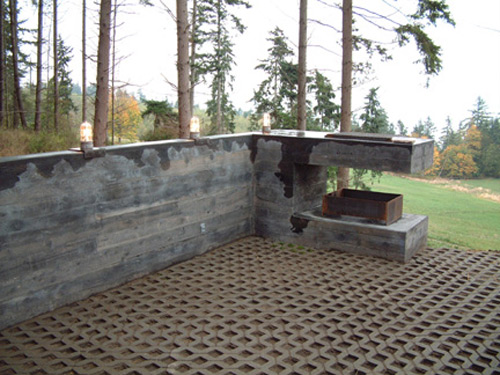
[All photos by BUILD LLC unless noted otherwise]
This time of year we are always confronted with a noteworthy amount of darkness here in the Pacific Northwest. At 48 degrees north, the sun rises at about 8am and sets at around 4.30pm, leaving nearly 16 hours of darkness. This is quite significant with regards to design and architecture –and not necessarily in a bad way. These environmental conditions cause us to design differently and we use such circumstances to give architecture a sense of place and purpose. Today’s post covers 10 strategies for designing in the dark –this “kit of parts” improves the architecture and helps to create a regional design language.
1. Glowing light
One of the best examples of glowing light is the backlit etch matte glass we like to use at garage doors. In the project below, the glowing garage door gives the exterior terrace a luminous warmth. Lately we’ve been specifying the Modern Classic P516 overhead door by Select Garage Door, it’s made of anodized aluminum and obscure glass panels.
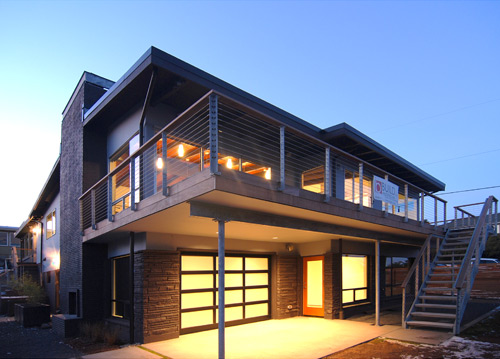
2. Landscape lighting
It’s difficult to find unobtrusive, functional landscape lights; fortunately there’s a couple of models out there that maintain the modernism without blowing the budget. For a sharp entry approach, check out the Hinkley 1579SS and for uplights at walls we recommend the cost-effective Malibu cast metal flood light. We used both on a recent Magnolia project.
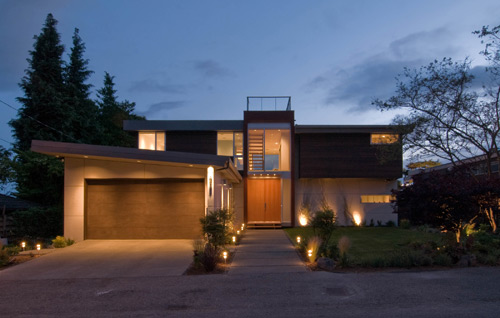
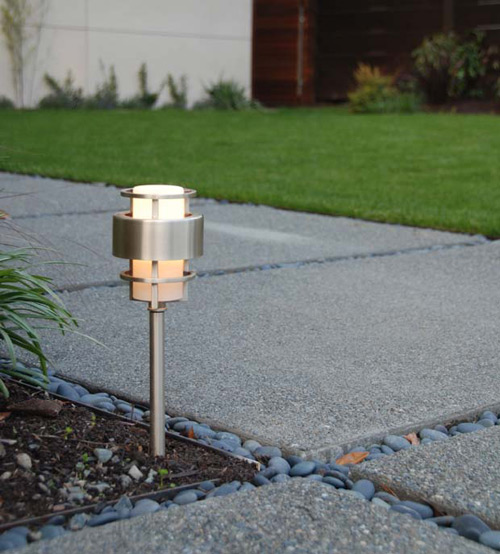
[Photo by Mike Davidson]
3. Color
When we were studying architecture in Denmark we came to understand and appreciate the subtle use of yellow and orange tones on the façades of buildings. It creates a handsome contrast with the gray skies during the day and at night it offers a visual warmth. While we might be hesitant to use colorful paints, there are a variety of natural materials that offer a spectrum of warm colors.
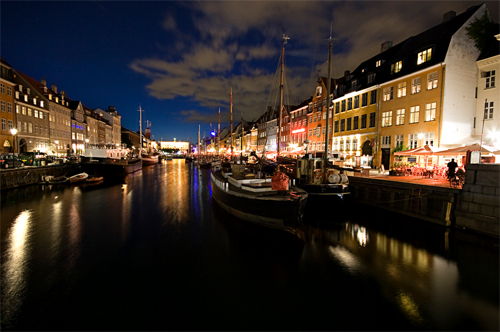
[Photo by Pablolemoscochandio]
4. Warm materials
We like the reddish tones that cedar adds to the nocturnal color palette. The application below uses 1×4 clear western red cedar with a Sikkens cetol SRD natural cedar sealant. The boards are face nailed w/ 15gauge stainless steel nails.
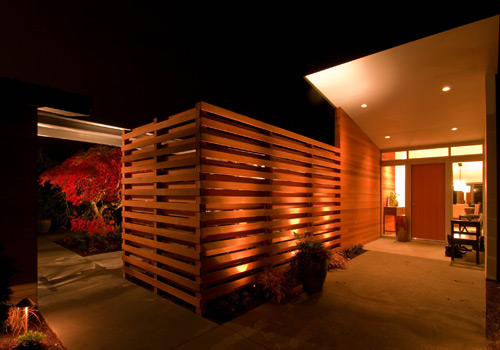
5. Indirect light (or light reflected on surfaces)
Light reflected on cedar boards is almost always a successful combination here in the Northwest –it lends a warm, welcoming feel to walls or ceilings. Lights can either be landscape lights from below (see #2) or for a ceiling mount light, we like to use the Lightolier 5 inch recessed can light with Alzak trim and halogen lamps.
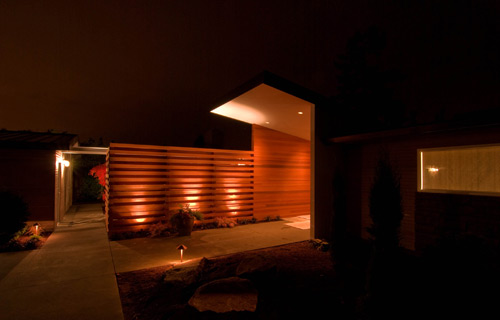
6. Destination points
Point lights also have their place at the exterior. Using either incandescent or halogen recessed lights lends warm tones and puts a focus on a particular area of the exterior. The example below highlights the entry area; we’re also getting a bit of reflective light off of the fir doors.
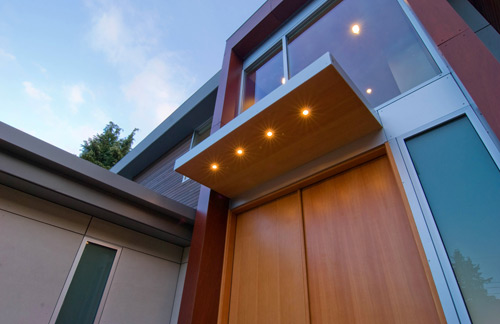
7. Exposed Edison bulbs
These bulbs started popping up in some of our favorite restaurants around town. We like that they keep the atmosphere dimly lit; their clear housing allows a view of the glowing electric coils and the visual warmth of the light is excellent. The examples below have an additional wire protection frame around the bulbs.
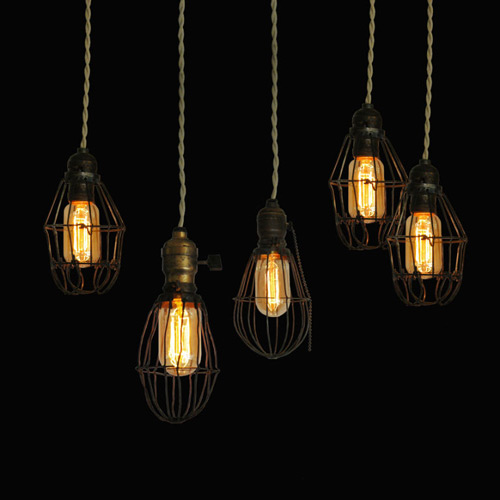
[Photo by rewire]
8. Modern candelabra
Another quality we admire about the Danes is their use of the candelabra –a decorative candlestick usually located on or near a window sill to be viewed from inside and outside. It was always a nice signal that the inhabitants were up and accepting visitors. We’ve come up with our own modern version which uses a single candle held by a modern steel arm
9. Visually warm gathering spaces
The composition usually includes large glass walls, long tables for gathering and a high contrast between a dark exterior and a bright interior. It’s a lifestyle aesthetic that promotes atmosphere and community.

10. Fire boxes
It’s just nice to have a fire burning in the background during the dark winter months. For indoor applications we’ve been specifying a Heat & Glo fire box and wrapping the face with custom steel plates. It’s a clean, minimal design without any of those ridiculous fake logs; it also turns on via a simple switch which is easily tucked into a cabinet.
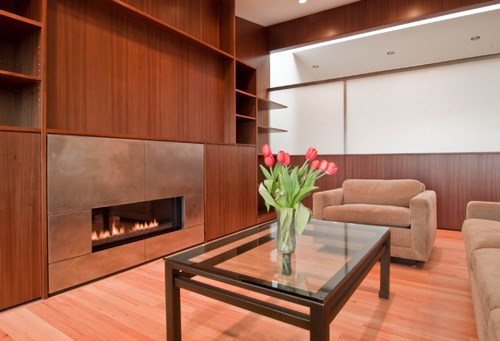
We recommend doing something simple but custom for an outdoor fire box application. The fire box below is formed concrete and includes a steel grill above for cooking. This particular firebox is an extension of the house foundation and helps frame the view beyond.
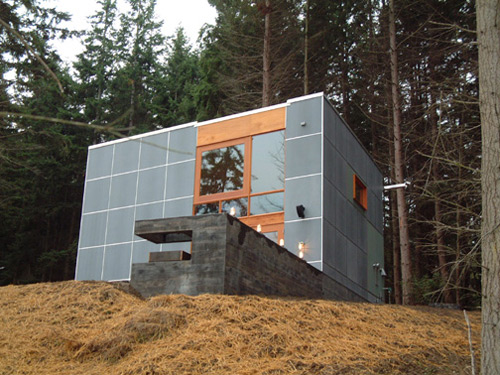
While most of these items are somewhat obvious, we’re always amazed at how little attention is given to design when the sun goes down. Several incremental design considerations can make for a wonderful night-time experience and, at least in the Pacific Northwest, that’s a big chunk of the year.
Thanks for tuning in and let us know of your top nocturnal design favorites.







